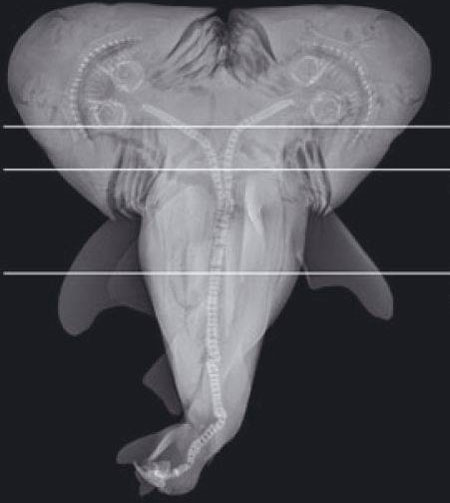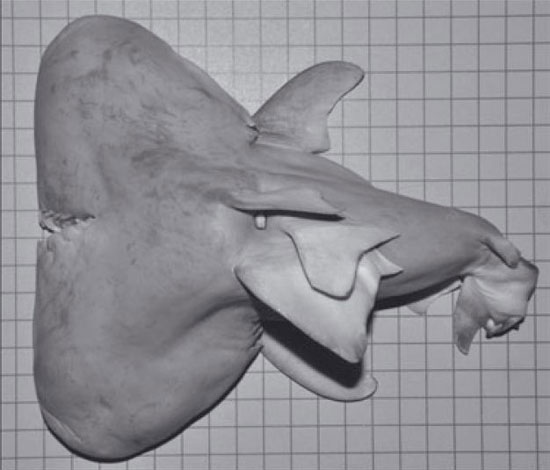Catch a shark with two heads
When a fisherman caught a new bull shark recently off the coast of Florida, USA, he was surprised to discover that one of the fetuses still alive inside the mother shark's belly has two heads.
These fishermen kept the strange specimen and shared it with the scientists. The study, published in the Journal of Fish Biology, is one of the few examples of a two-headed shark ever recorded (until now only six cases have been published) and is the first case of this type in the bull shark.

X-ray of fetal bovine shark shark 2 heads. (Photo: Live Science)
OurAmazingPlanet page quoted research co-author Michael Wagner from the University of Michigan, saying that the variation is the result of embryos beginning to divide into two separate bodies (twins) but this process is discontinuity.
'Between the twinning process, the embryo stops dividing', Wagner explained.
The researcher said the fetus of two-headed sharks will most likely not be able to live long in nature. The reason is that, this mutation hinders the predator's ability to catch other fast-swimming fish that have two bulky heads. One more reason that two-headed sharks don't seem to be able to survive is because of their small body, unable to store enough energy to feed their heads.

The distance between the shark's heads is 20cm. (Photo: Live Science)
According to Wagner, describing a mutated shark could one day help people better understand how to develop mutations in sharks and other animals.
Wagner said people can buy snakes and double-headed turtles at some special breeders. There is a small market dedicated to such creatures.
Most of the few examples of two-headed sharks today are taken from museum specimens from the late 1800s, when mutant animals and other curious and scary things are always for sale. Fisher Price.
- Unexpectedly caught the extremely rare shark after nearly a decade
- Catch sharks from prehistoric times
- Catch a shark with a body like a snake, a mouth of 300 teeth
- Australia: Giant tiger shark 5 meters long has been subdued by fishermen
- Two first shark fetus
- Swallowing the bait, the black fin shark snapped the wrong head
- American father and son catch shark
- Thanh Hoa: Fishermen catch 3 sharks near the shore
- Big sharks eat small sharks
- Catch an extremely rare 'alien' shark
- Catch two-headed snakes during gardening
- The first shark in history to know ... vegetarian but still healthy
 Surprised: Fish that live in the dark ocean still see colors
Surprised: Fish that live in the dark ocean still see colors Japan suddenly caught the creature that caused the earthquake in the legend
Japan suddenly caught the creature that caused the earthquake in the legend A series of gray whale carcasses washed ashore on California's coast
A series of gray whale carcasses washed ashore on California's coast Compare the size of shark species in the world
Compare the size of shark species in the world